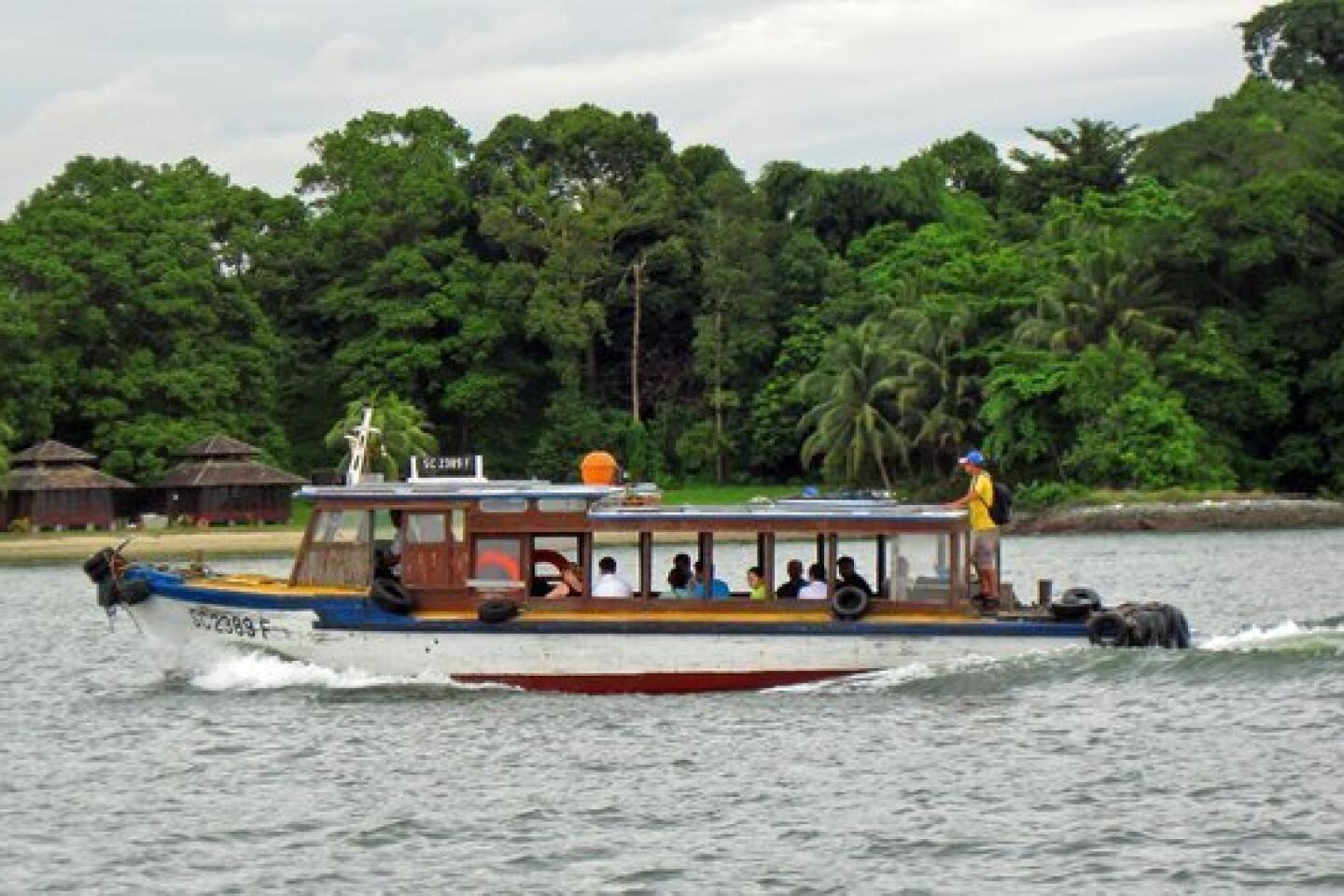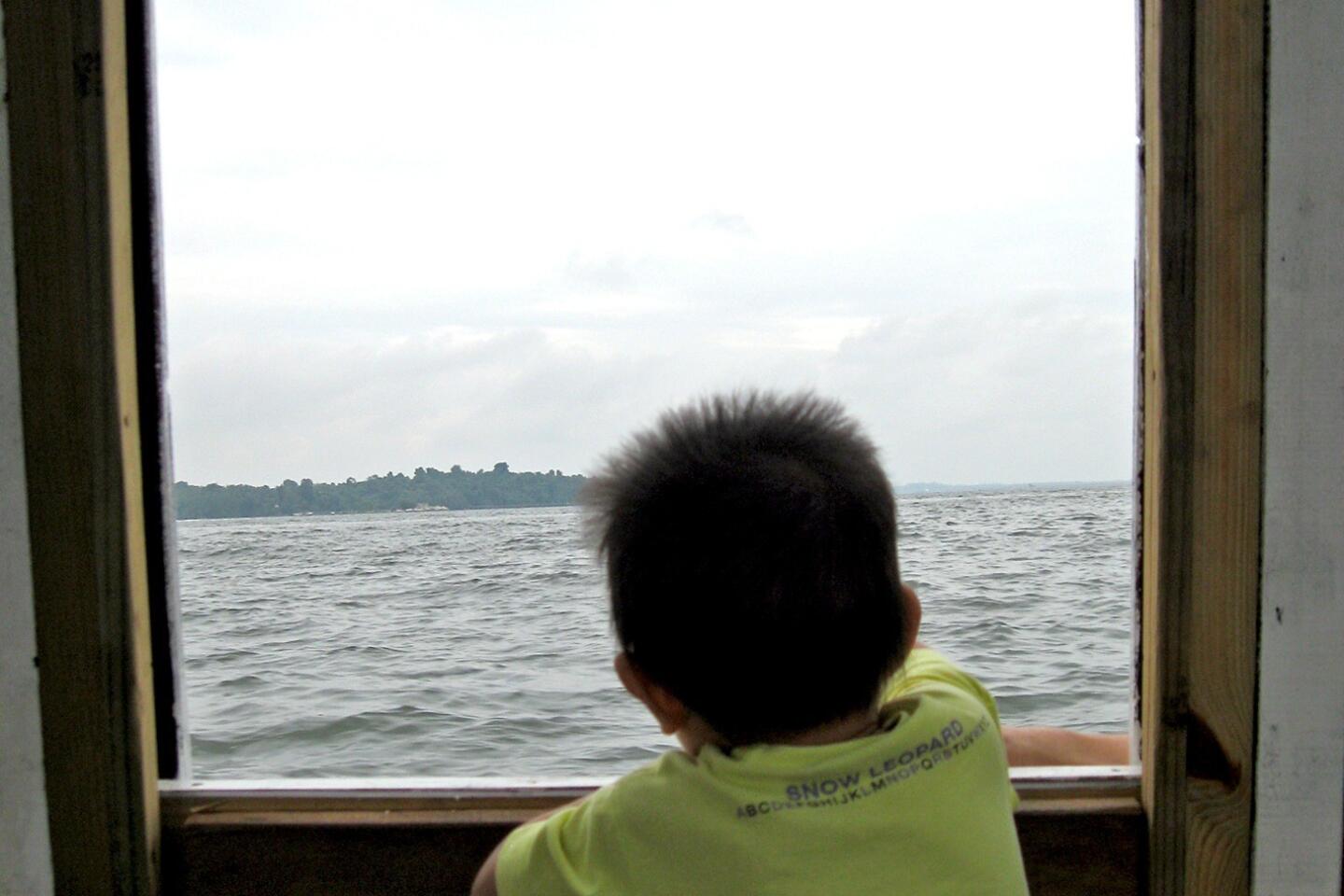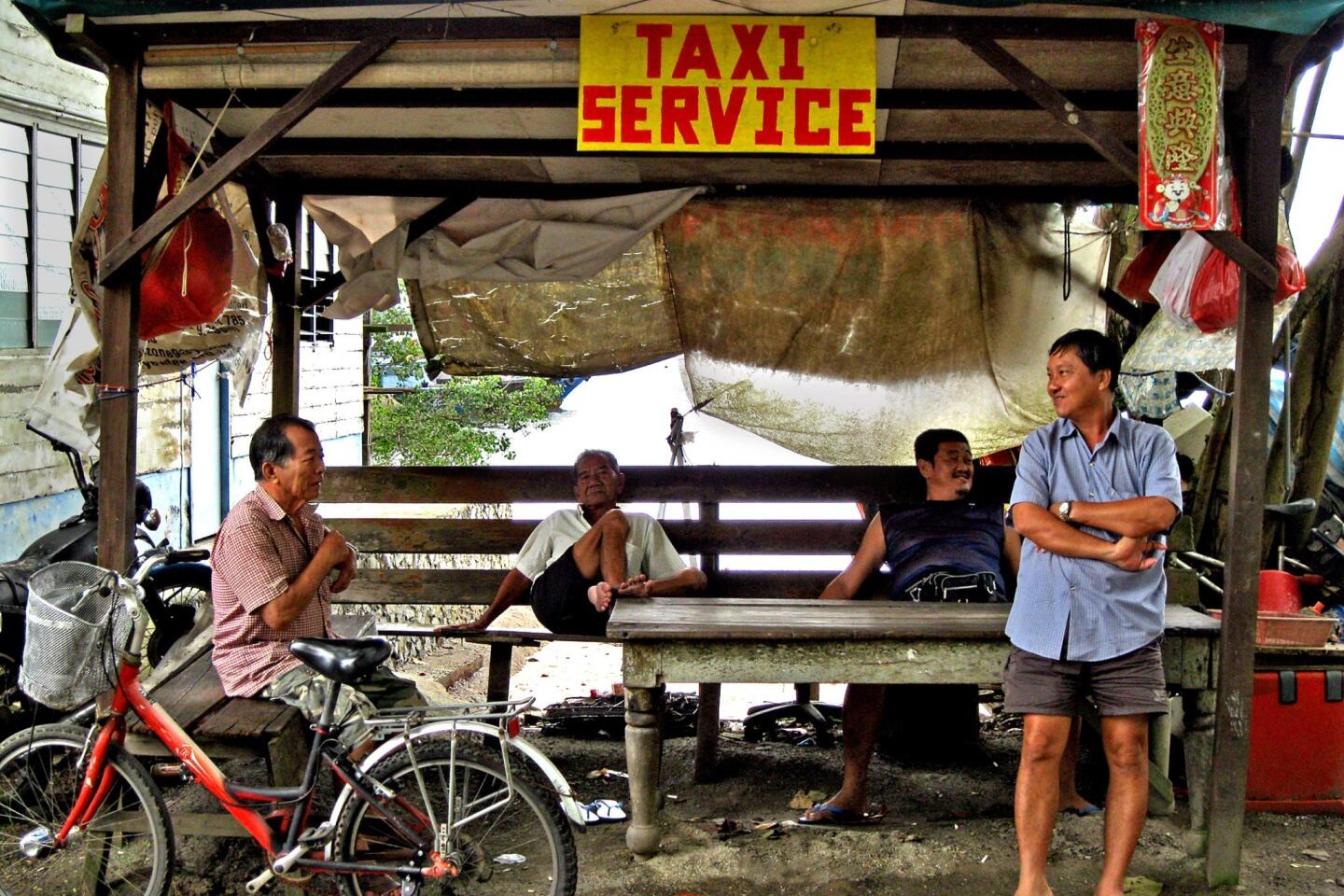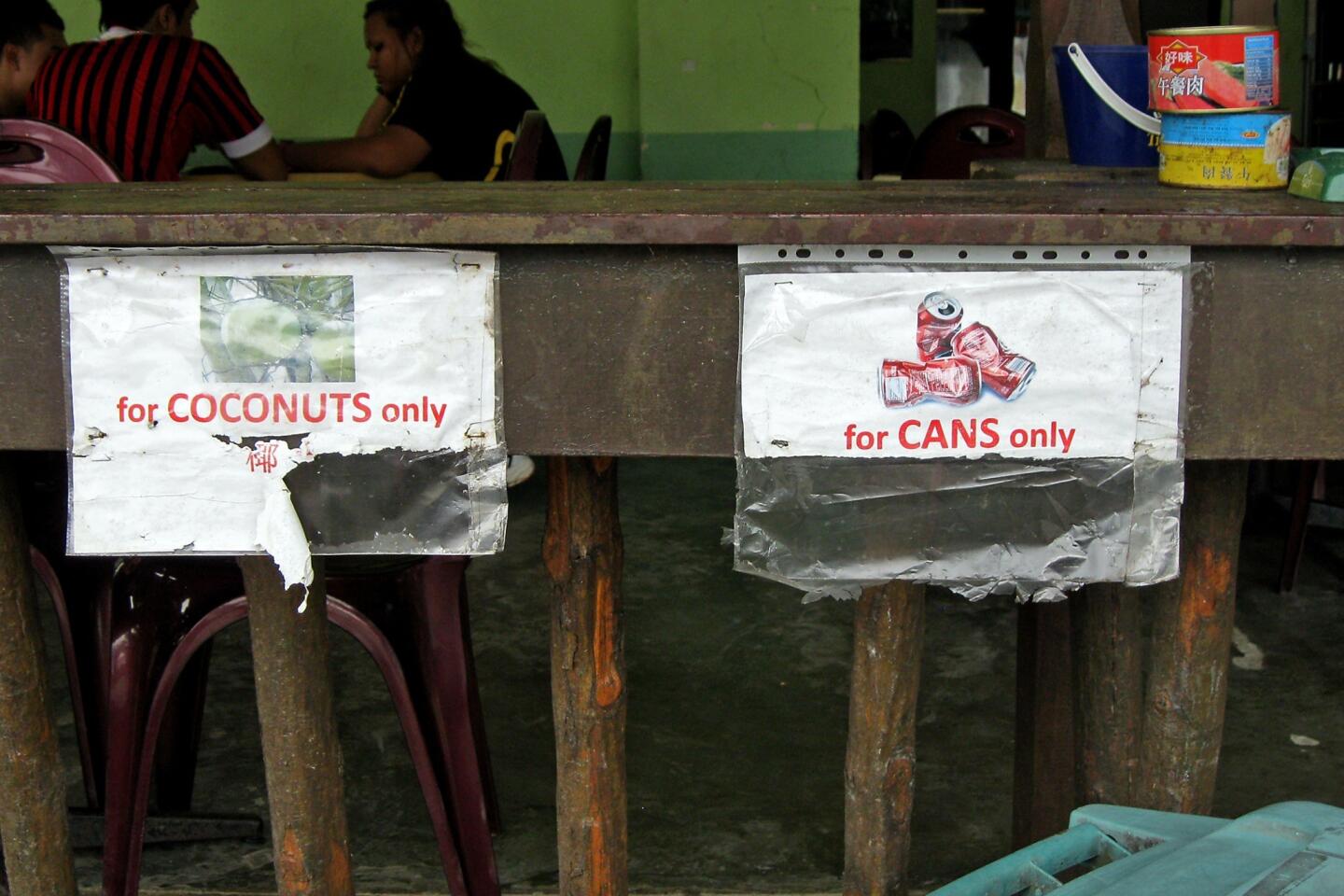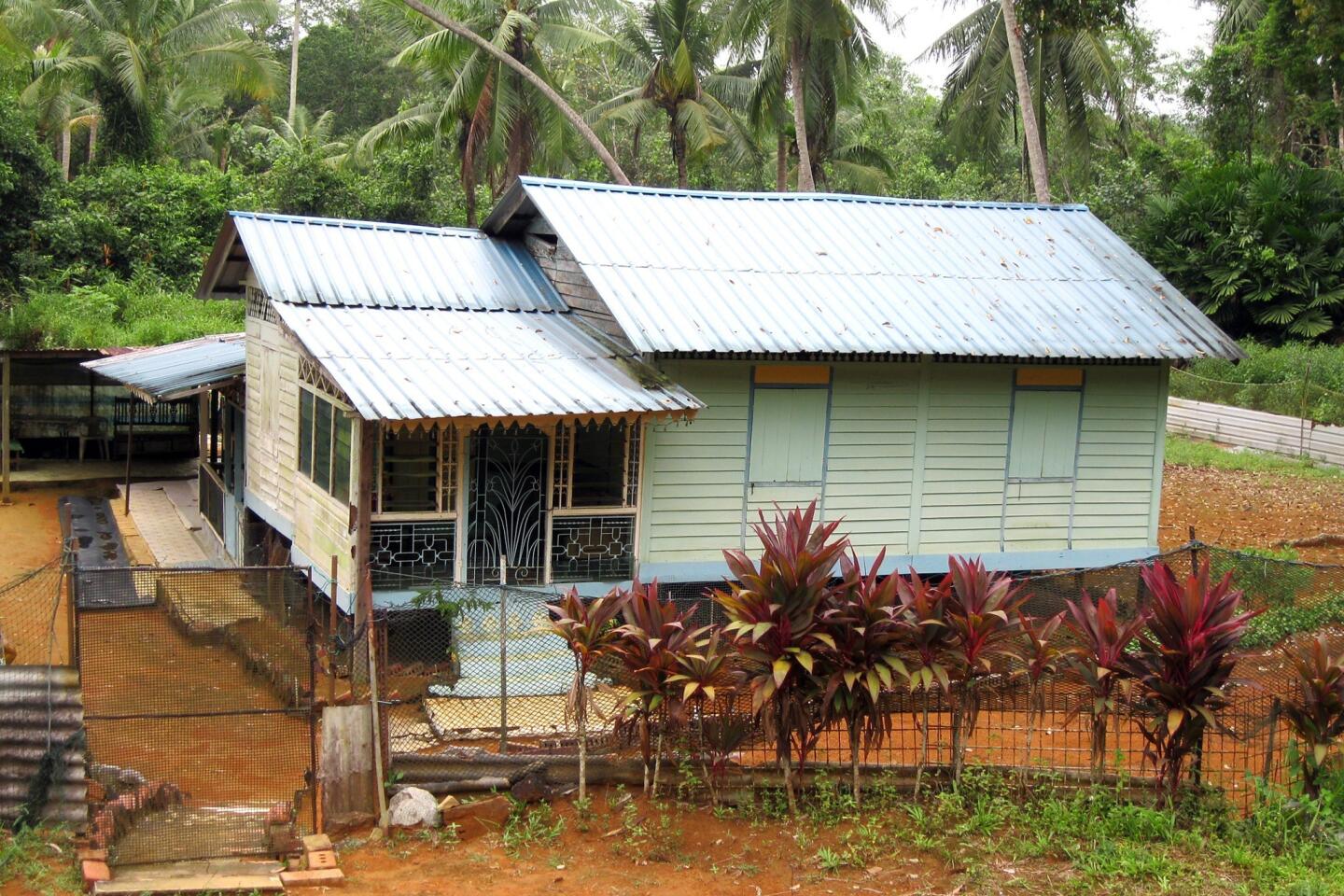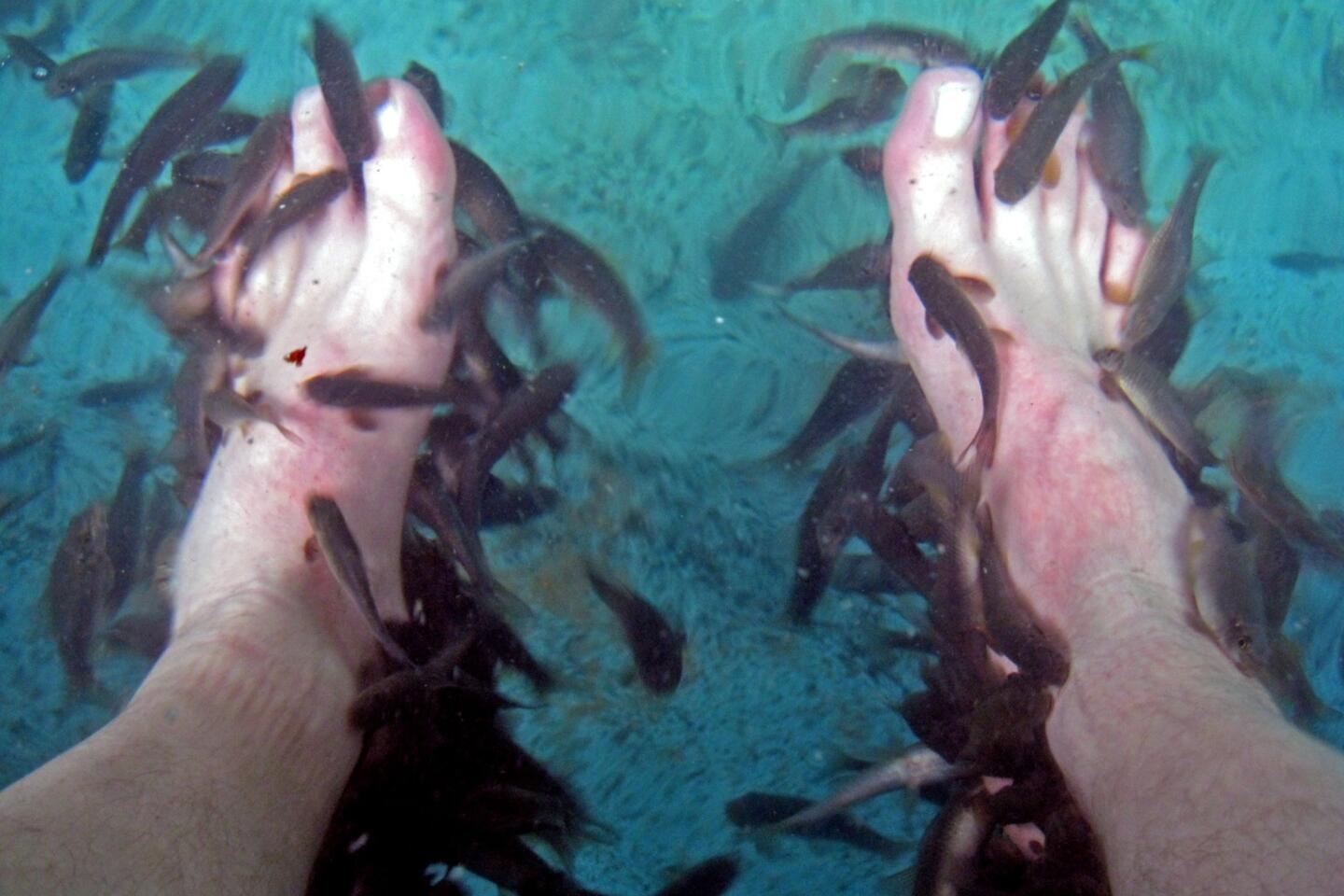Singapore’s Pulau Ubin offers a step back in time
- Share via
PULAU UBIN, Singapore — Think back, if you can, to 1965. The Gateway Arch in St. Louis was the year’s architectural marvel, the world mourned Winston Churchill, and Pampers disposable diapers made their debut. Meanwhile, at the tip of the Malay Peninsula, the republic of Singapore declared its independence from Malaysia.
Today, the Gateway Arch still inspires, Churchill’s iconic status is unfettered, and what’s a cloth diaper? But the Singapore of 1965? Barely recognizable.
Except in one place: the island of Pulau Ubin, in the Johore Strait, which separates the city-state from Malaysia to the north. Although it’s less than 15 minutes by boat from mainland Singapore, the difference could hardly be more pronounced.
FOR THE RECORD:
Singapore travel: In the Dec. 30 Travel section, the “If You Go” box with an article about Pulau Ubin in Singapore should have included EVA Air in a list of carriers offering connecting service to Singapore.
Among Singaporeans of a certain age, the mention of Pulau Ubin conjures nostalgia for the days before their nation’s transformation from a jungle of simple villages, called kampongs, to a forest of high-rises. For Singaporeans born since the 1970s, Pulau Ubin is probably as foreign as it was to this American, who went in search of peace, quiet and, quite literally, another side of Singapore.
Forty-seven years after independence, Singapore is Exhibit A for modernization: With 5 million souls in 272 square miles, it is Earth’s second-most densely populated country after Monaco. Yet somehow it works, a multicultural metropolis and an economic rocket ship, one of the world’s most educated societies and busiest ports, renowned for its street food and a flag-carrying airline that induces jealousy among other travelers.
Its architecture mixes British colonial with space age, its luxury hotels and shopping strips always seem busy, and it’s so famously tidy that litter on its streets is a shock.
Pulau Ubin, on the other hand, feels bypassed by the decades.
Its estimated population of 45 families in 4 square miles lives in what signage calls Singapore’s last remaining kampongs, many under corrugated tin roofs without electricity or running water. The few paved roads give way to gravel and dirt paths, in turn giving way to wooden boardwalks through marshlands and coastal plains.
About 20% of the island’s vegetation is mangrove forest, and there’s also Singapore’s only off-road biking course.
It’s one of the few places in the city-state where nature runs unfettered. While Singaporeans across the strait walk dogs, the dogs on Pulau Ubin are (mostly friendly) strays, sharing their turf with monkeys and wild boar. Bird- and sea life include plovers and sandpipers, the crab-eating salted frog and the banded archerfish, which kills its insect prey by shooting a jet of water.
A bit of etymology: Pulau means island in Malay, and ubin derives from the word for granite floor tiles, once quarried here by Chinese laborers. (The causeway to Malaysia was built with granite from Pulau Ubin.) After the quarries closed in the 1970s, workers left and the island went into Rip van Winkle mode.
By the 1990s, the Singapore government had drafted plans to modernize Pulau Ubin like the rest of the nation, until naturalists discovered its wonders and preservationists sought to save one example of kampong culture.
Today, Pulau Ubin is protected from development.
From the moment I boarded the bumboat from the dock near Changi Airport, it felt as if I were not in Singapore anymore. Small wooden bumboats are Singapore’s signature transport (what the bateau mouche is to Paris), but whereas the bumboats plying the Singapore River through the city center appear spit-shined and plush, the ones to Pulau Ubin are all business, hauling people and cargo on hard seats covered with patterned Con-Tact paper.
Something else un-Singaporean: no schedule for boats to the island. They depart when 12 passengers show up and pay about $2 each. If you pay about $25 to hire the whole boat, it will leave right away.
At Pulau Ubin’s principal kampong by the boat dock, former homes have been converted to humble open-air restaurants and stalls selling packaged food and supplies for campers and day-trippers. (One set of trash bins was designated for cans or coconuts.) A ramshackle Confucian temple, overseen by a roaming rooster, looked ticky tacky compared with the gleaming, multistory Buddha Tooth Relic Temple in Singapore’s Chinatown.
Several shops in the kampong rent bicycles, an easy and economical way to get around the island on well-marked roads. Island taxis (usually simple vans) wait at the dock in case you’re not used to off-roading (useful if it’s been raining).
Alternatively, it takes about 40 minutes on foot to get to Chek Jawa Wetlands National Park, the island’s main attraction on Pulau Ubin’s southeastern end. The park comprises six ecosystems from coastal hills to sand bars and a mangrove forest, nature all but unknown to Singaporean urbanites.
The wetlands’ visitor center offers a peek into colonial history, a 1930s Tudor-style home built partly of (what else?) granite for the British chief surveyor. Signs note that the house boasts Singapore’s only operational fireplace (unnecessary in this tropical climate, so the chimney is now home to a colony of bats).
Nearby, from the top of the 66-foot Jejawi observation tower, the tops of palms seemed to reach up to my feet (a jejawi is a Malaysian banyan tree), and brisk winds during my visit made the canopy roil like a second sea.
From here, it’s a fast 40-minute trip to a leisurely 1½-hour ramble along the boardwalks. Mangrove trees’ extensive root systems help prevent soil erosion in strong seas, and their roots protrude from the ground to “breathe” the oxygen the silty earth doesn’t provide. Unique species of crabs and lobsters can occasionally be seen skittering through the mangrove roots. The boardwalk continues on a coastal path, along a sea-grass lagoon and a shore of coral rubble punctuated by barnacles and tiny starfish.
Pulau Ubin can easily be a day trip (the bumboats run from 5:30 a.m. to 9 p.m.), which I would recommend; the options for overnight guests (mostly campgrounds) reminded me of backpacking through rural Thailand in the 1980s. The open-sided restaurants in the dockside kampong are no gourmet experience either, although they’re a decent value.
If you prefer a roof over your head, about your only option is the Celestial Pulau Ubin Resort. “Resort” is overstated, given the spare tile-floor rooms and meals at a beach club-for-backpackers-style snack bar. Still, it has a great waterside location a few minutes on foot from the jetty, with views across the Johore Strait. You’ll find a simple beach, kayaks and bicycles for hire, as well as a foot spa full of “doctor fish” (garret ruga, or reddish log suckers), which tickle-nibble at dead skin and are supposed to leave your feet feeling smooth.
The best reason to visit Pulau Ubin is to escape the modern world, a rare feat anywhere these days.
Authorities estimate that the island gets about 2,000 visitors on weekends, but if you go on a weekday as I did, you’ll probably find yourself blessedly alone. In Singapore, that’s an accomplishment.
More to Read
Sign up for The Wild
We’ll help you find the best places to hike, bike and run, as well as the perfect silent spots for meditation and yoga.
You may occasionally receive promotional content from the Los Angeles Times.
